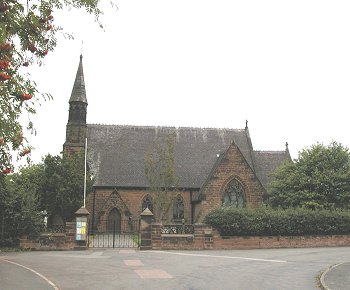|
The Final Years
By 1874 the fortunes of the Village
Foundry were in decline, possibly due to the failing health of John
Smith. On his retirement the business closed and Messrs Wheatley and
Price sold the foundry by auction on March 30th, 1874. The
plant included the following machinery:
| A powerful treble-geared boring and facing
lathe with 33 inch centres, a 6ft face plate, massive bed,
21 ft long, and pillar and compound rest. |
| A 12.5 inch sliding and surfacing lathe,
16 ft bed, self-acting planning machine to plane 10 ft x 3 ft
9 inches x 3 ft 3 inches. |
| A 13 inch stroke shaping machine with
circular motion. |
| A double-geared self-acting drilling
machine, to admit 3 ft diameter. |
| A single-geared self-acting drilling
machine, to admit 3 ft diameter. |
| A single-ended punching and shearing
machine |
| A small set of plate-bending rolls |
| A 10 hp. horizontal engine |
| A 12 hp. boiler |
| A large assortment of engine and other
patterns, foundry plant, cupolas and cranes, smith’s tools
and appliances. Incomplete locomotives and other engines and
about 100 tons of loose material and boilers. |
|
|

The site of the Village Foundry as it is
today. |
The foundry seems to have operated with very
little plant. The locomotives and other engines mentioned are a
mystery, which is unlikely to be solved because the auctioneers
records were destroyed in an air raid. The buildings were
retained by the firm of Smith & Higgs, which continued as
threshing and ploughing contractors. In about 1878 John Smith
moved to Saredon Mill, Shareshill, where he died in a coma from
diabetes on February 2nd, 1879. He is buried at Coven. |
|
The foundry records and photographs
have all disappeared. The buildings continued in use until recently and
were first used as a brewery and later purchased by Mcleans, who made
breeze blocks there. The buildings were demolished in about 1980 and the
site has been redeveloped for housing.
It is sad that so little remains of this
once important enterprise. John Smith must have been one of the
country’s earliest manufacturers of narrow gauge and industrial
locomotives.
|

Coven Parish Church where John Smith is
buried. |
| Bibliography
David H. Tew, John Smith of Coven, Engineer, 1827-1879,
The Newcomen Society, Transactions Vol. 26
A.R. Bennett, The Chronicles of Bolton's Sidings, London,
1927
J.A. Clark, Account of the application of steam power to the
cultivation of the land, Royal Society Journal, Engineering,
Series 1, Volume 20 |

|
|

|
Return to the
Previous page |
|
Return to
the contents |
|